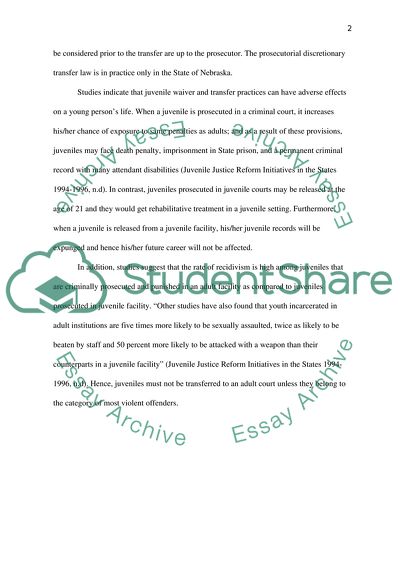Juvenile and Adult Courts: A Comparative Analysis Essay - 1. Retrieved from https://studentshare.org/law/1597535-juvenile-and-adult-courts-a-comparative-analysis
Juvenile and Adult Courts: A Comparative Analysis Essay - 1. https://studentshare.org/law/1597535-juvenile-and-adult-courts-a-comparative-analysis.


